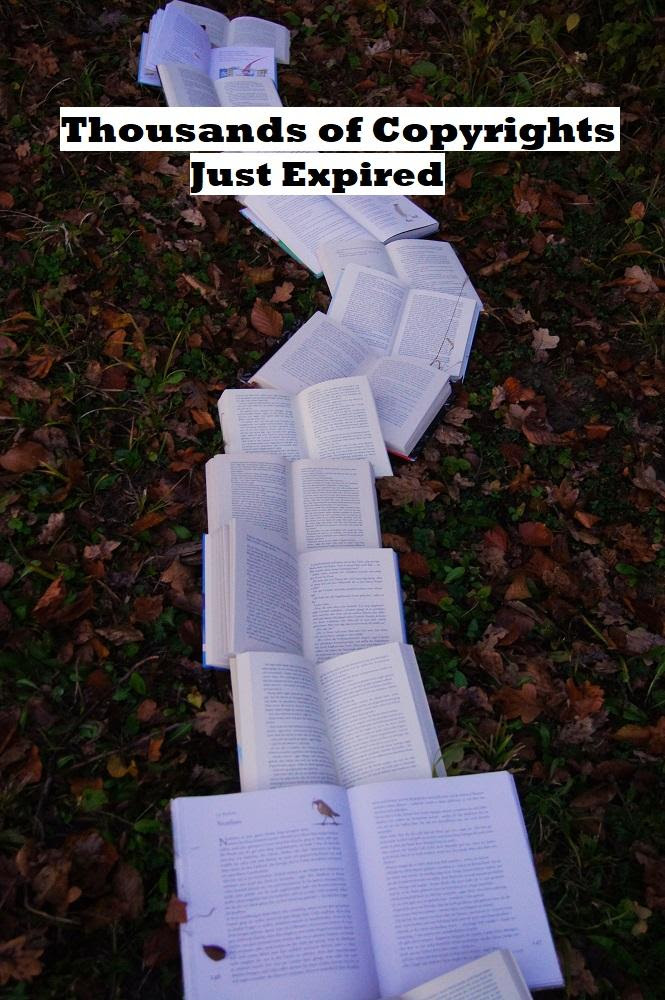This year, New Year’s Day brought more than resolutions, football games and hangovers: on January first, thousands of works previously protected by copyright entered the public domain.
The 1998 Sonny Bono Copyright Term Extension Act added an additional 20 years to existing copyrights, so works first published in 1926 are entering the public domain.
Once a work becomes part of the public domain, anyone can reproduce it or create derivative works based on it, and then sell those reproductions or derivative works.
These public domain works can, therefore, be circulated online, adapted by theater and film producers, photocopied for students, covered by musicians, and converted into new media, all without the need to obtain permissions or pay royalties.
Books that have now entered the public domain include Willa Cather’s My Mortal Enemy, Agatha Christie’s The Murder of Roger Ackroyd, Arthur Conan Doyle’s The Land of Mist, William Faulkner’s Soldiers’ Pay, Edna Ferber’s Show Boat, Ernest Hemingway’s The Sun Also Rises, Langston Hughes’ The Weary Blues, Franz Kafka’s The Castle, D. H. Lawrence’s The Plumed Serpent, T. E. Lawrence’s The Seven Pillars of Wisdom, H. L. Mencken’s Notes on Democracy, A. A. Milne’s Winnie-the-Pooh (with decorations by E.H. Shepard), Dorothy Parker’s Enough Rope, Vita Sackville-West’s The Land, and Felix Salten’s Bambi, A Life in the Woods.
Films that have now entered the public domain include Herbert Brenon’s The Great Gatsby, Alan Crosland’s Don Juan, George Fitzmaurice’s The Son of the Sheik, Buster Keaton’s Battling Butler, Henry King’s The Winning of Barbara Worth, F. W. Murnau’s Faust, Fred Niblo’s The Temptress, Harry A. Pollard’s The Cohens and Kellys, Victor Sjöström’s The Scarlet Letter, and Sam Taylor’s For Heaven’s Sake.
Some of the musical compositions (note – not the audio recordings) now in the public domain are Irving Berlin’s Gentlemen Prefer Blondes; Someone To Watch Over Me by George Gershwin and Ira Gershwin; Bye Bye Black Bird, by Ray Henderson and Mort Dixon; Ferd ‘Jelly Roll’ Morton’s Black Bottom Stomp; Harry Woods’ When the Red, Red Robin Comes Bob, Bob, Bobbin’ Along; and Joseph ‘King’ Oliver’s Snag It.
Sound recordings entering the public domain include a number of works recorded by Fanny Brice, Enrico Caruso, Pablo Casals, Anna Chandler, Fisk University Jubilee Quartet, Billy Murray, Mamie Smith and Her Jazz Hounds, The Sousa Band, Sophie Tucker, Ethel Waters, and Bert Williams.
Bertolt Brecht’s Man Equals Man, Zora Neale Hurston’s Color Struck, and Giacomo Puccini’s Turandot are some of the plays that are now in the public domain.
You’ll still need to be careful when reproducing and distributing these works (or works based on these works), though, since they may still be protected in countries other than the US, and there may be protected trademarks involved.
Also, newer derivative works of the 1926 originals are likely still protected. A derivative work is a work based on or derived from one or more already existing works.
Derivative works include such things as new editions, translations, musical arrangements, motion picture versions of books or plays, art reproductions, and abridgments. Any new protection will cover only the additions, changes, or other new material appearing for the first time in the work. Protection does not extend to any preexisting material.
If you want to reproduce a work that has not yet entered the public domain, you will still need to obtain permission from the copyright owner, pay for a compulsory license (in the case of music), or rely on the doctrine of fair use.
According to the copyright statute, at least the following four factors must be considered when determining whether copying is a fair use:
1. The nature of the original work;
2. The nature and purpose of the use, including whether it is for commercial use or for nonprofit educational purposes and whether the use is “transformative” (adding something new);
3. The amount and substantiality of the portion used in relation to the original work as a whole; and
4. The effect the copying would have on the market for, or value of, the original work.
As you can see, there are no “bright line” rules defining fair use. Rather, a court must weigh various factors on a case-by-case basis. Even the courts have difficulty coming to agreement on whether a use is a fair one.
Please feel free to contact us if you’re in doubt as to whether a work is in the public domain or whether your copying of someone else’s work – or their copying of your work – is likely to be found a fair use or an infringement.
Photo by Laura Kapfer on Unsplash






